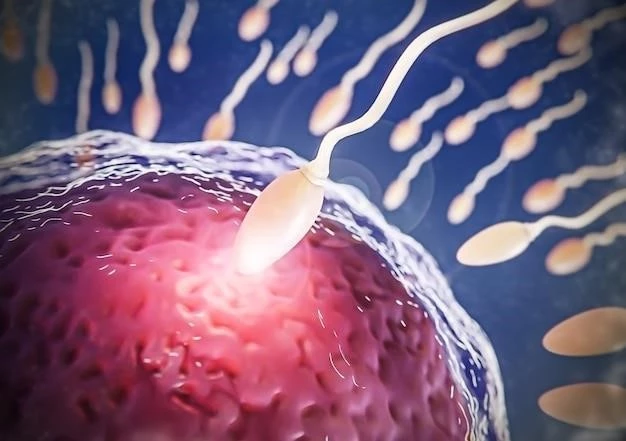Introduction
Wilms tumor and pseudohermaphroditism are complex conditions with overlapping manifestations and genetic implications. Understanding the interplay between these two disorders is crucial for accurate diagnosis and effective treatment strategies.
Wilms tumor and pseudohermaphroditism are complex conditions with overlapping manifestations and genetic implications. Wilms tumor, also known as nephroblastoma, is a rare kidney cancer primarily affecting children. It is characterized by the abnormal growth of cells in the kidneys and is often associated with genetic abnormalities. Pseudohermaphroditism, on the other hand, refers to disorders of sex differentiation where individuals may have atypical genitalia that do not align with their chromosomal sex. This condition can manifest differently in males and females, leading to a range of clinical presentations.
Understanding the intricate relationship between Wilms tumor and pseudohermaphroditism is essential for healthcare professionals to provide accurate diagnosis and appropriate treatment. The overlap between these two conditions can pose diagnostic challenges, necessitating a comprehensive evaluation of genetic factors, clinical symptoms, and imaging studies. By delving into the complexities of Wilms tumor and pseudohermaphroditism, medical experts can devise tailored management strategies that address the unique needs of each patient.

Wilms Tumor⁚ Causes and Symptoms
Wilms tumor, a rare kidney cancer in children, often manifests as an abnormal growth of cells in the kidneys. Symptoms include an asymptomatic abdominal mass, abdominal pain, and hematuria. Genetic abnormalities like WT1 mutations are associated with an increased risk of Wilms tumor, male pseudohermaphroditism, and renal diseases.
Genetic Abnormalities and Risk Factors
The genetic abnormalities associated with Wilms tumor and pseudohermaphroditism involve mutations in the WT1 gene, leading to a higher risk of these conditions. The overlap between male pseudohermaphroditism, nephron disorders, and Wilms tumor suggests a potential common teratogenic origin that contributes to the complex interplay of these disorders. Understanding the genetic basis and identifying risk factors can aid in early diagnosis and personalized treatment approaches.
Overview of Wilms Tumor and Pseudohermaphroditism
Wilms tumor, a rare kidney cancer in children, often occurs with genetic abnormalities such as WT1 mutations leading to an increased risk. Pseudohermaphroditism is a disorder involving atypical genitalia, often found in conjunction with Wilms tumor and nephron disorders. Common teratogenic origins point to a complex relationship between these conditions.
Pseudohermaphroditism⁚ Understanding the Condition
Male pseudohermaphroditism is a complex sex differentiation disorder where atypical genitalia may not align with chromosomal sex. The overlap with Wilms tumor and nephron disorders suggests a shared teratogenic origin, highlighting the intricate relationship between these conditions.
Male Pseudohermaphroditism and Its Manifestations
Male pseudohermaphroditism presents with ambiguous genitalia that do not align with the chromosomal sex. The association with Wilms tumor and nephron disorders suggests a common teratogenic origin, leading to a complex interplay of genetic and phenotypic manifestations. Understanding the clinical implications of male pseudohermaphroditism is crucial for accurate diagnosis and management strategies.
Teratogenic Origins and Common Associations
The concurrence of male pseudohermaphroditism, Wilms tumor, and nephron disorders may originate from common teratogenic factors. These conditions often share genetic mutations, such as those in the WT1 gene, contributing to the complex overlap and associations seen clinically. Understanding the teratogenic origins can provide insights into the pathophysiology and management of these interconnected disorders.
Denys-Drash Syndrome
Denys-Drash Syndrome (DDS) is a rare disorder characterized by a triad of congenital nephropathy, Wilms tumor, and intersex disorders resulting from mutations in the Wilms tumor suppressor (WT1) gene. Understanding the clinical features and genetic basis is crucial for early diagnosis and targeted management.
Clinical Features and Triad of Symptoms
Denys-Drash Syndrome (DDS) presents with a triad of congenital nephropathy, Wilms tumor, and intersex disorders due to WT1 gene mutations. The clinical manifestation includes early-onset nephrotic syndrome progressing to mesangial renal sclerosis and kidney failure. Understanding these features is crucial for timely intervention and management of DDS.
Genetic Basis and Mutations in WT1 Gene
Denys-Drash Syndrome (DDS) is linked to mutations in the Wilms tumor suppressor (WT1) gene, contributing to the triad of nephropathy, Wilms tumor, and intersex disorders. The genetic abnormalities in exon 8 and 9 of the WT1 gene play a significant role in the pathogenesis of DDS, affecting renal function and gonadal development.

Diagnosis and Treatment
Accurate diagnosis of Wilms tumor and pseudohermaphroditism involves genetic testing, imaging studies, and clinical evaluation. Treatment may include surgery (nephrectomy), chemotherapy, and radiation therapy. Early intervention and personalized management are crucial for improved outcomes.
Diagnostic Approaches for Wilms Tumor and Pseudohermaphroditism
Diagnosing Wilms tumor and pseudohermaphroditism involves genetic testing for WT1 gene mutations, imaging studies like ultrasound and MRI, and clinical assessments to identify distinct features. The overlapping symptoms of these conditions warrant a comprehensive diagnostic approach to ensure accurate identification and appropriate management. Early detection is crucial for initiating timely treatment strategies tailored to the individual’s needs.
Therapeutic Strategies and Management Guidelines
Therapeutic approaches for Wilms tumor and pseudohermaphroditism encompass a multidisciplinary approach involving surgery (nephrectomy), chemotherapy, and radiation therapy as primary modalities. Management guidelines prioritize early intervention, personalized treatment strategies, and close monitoring to optimize clinical outcomes. Coordinated care by healthcare teams is essential for comprehensive and effective management of these complex conditions.
